Semiconductor tester Peak DCA75

For a simple tester this device looks fairly expensive, but compare to professional test equipment it is fairly cheap.
Compared to the cheap testes this device uses much more controlled test conditions, i.e. most tests are done at 5mA, but it lacks the capacity estimate.
The small box is the same box as all component testers from Peak uses.
The tester has a computer connection that makes it possible to draw curves.
How does it look
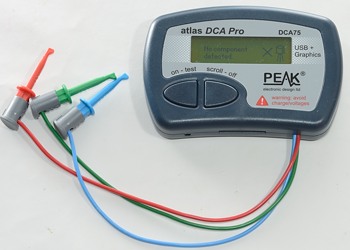
All peak testers uses the same shape and size for their enclosure, only the color and the connections varies.
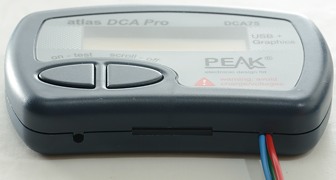
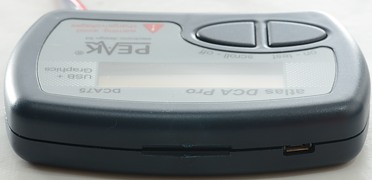
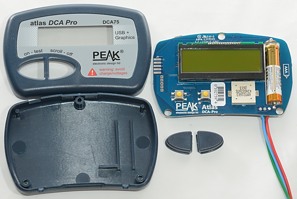
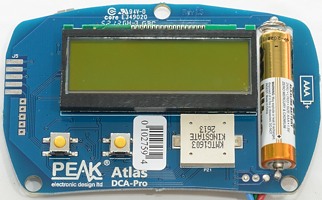
There is not much on the topside, it only has the display, two buttons and the buzzer.
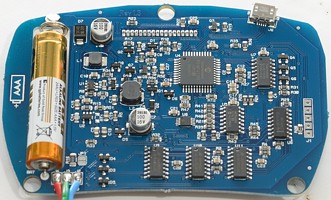
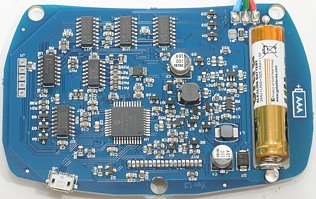
This is not a simple tester, it has lot of electronic on the underside of the circuit board. It can boost the battery voltage to 12 volt and control both voltage and current.
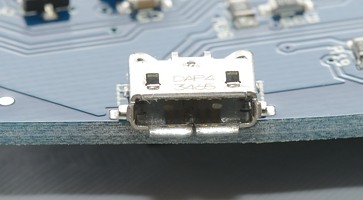
The usb connector can be used to upgrade software and also makes it possible to draw curves of the semiconductors performance at low current.

Connection to the components are done with with 3 hooks.
Resistors
Not supported.
Capacitors
Not supported.
Inductors
Not supported.
Diodes
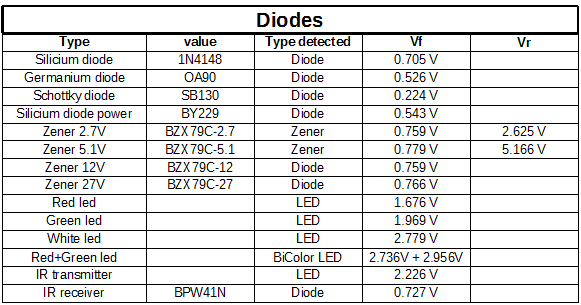
This tester uses 10 volt for testing, this makes it possible to detect zener diodes up to 10 volt. It does also have a list of typically voltages for different types of diodes and will not only say diode, but will clasify them to some degree.


The tester uses Vf to guess when it is a diode or a LED.

With a computer connection there is some more explanation, it is also possible to make a Vf/If chart.
SCR (Thyristors) + Triacs

It is fairly good at detecting SCR and triacs, but there are limits due to the low test current. There are no parameters when testing these components.

BJT (Bipolar junction transistors)

The tester is very good at testing transistors, it will detect both diodes and resistors and Vbe and Hfe is measured at well-defined conditions.


The display only has 3 lines, this means that the scroll button must be pressed a couple of times to see everything.
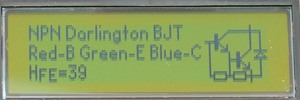
No problem showing both diode and resistors.
With computer connections it is much easier to read the result:
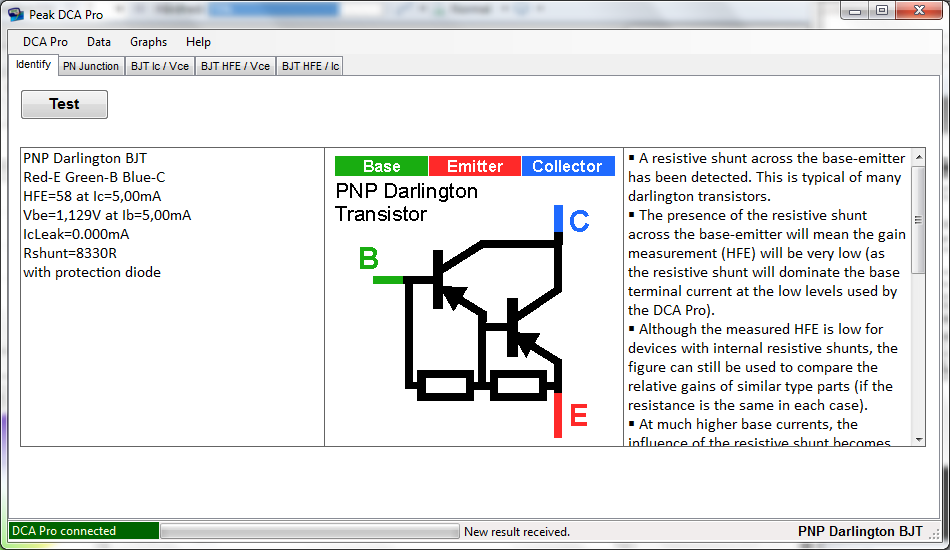
But the symbol is missing the diode.

Due to the resistors the curves looks a bit funny.
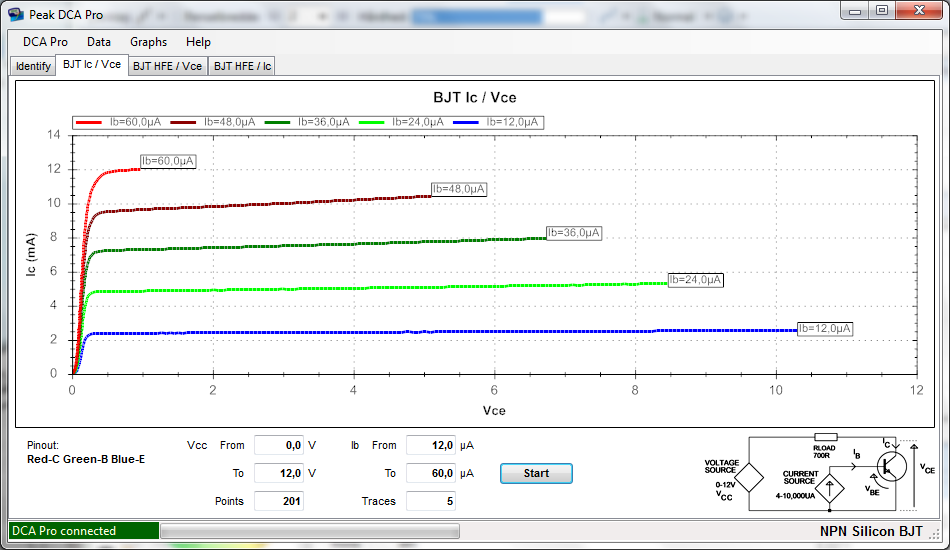
A BC547 looks more normal.
FET (Field effect transistors)
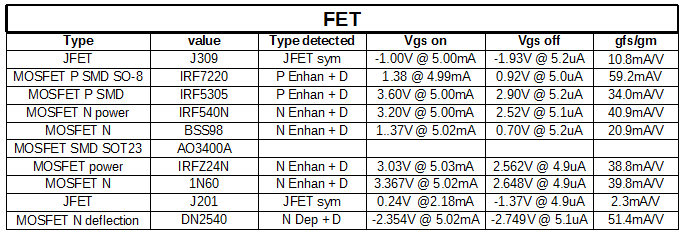
It is also very good at detection FET transistors, but I could not connect the small SMD fet. Again the measurements are done at well-defined conditions.


Due to the many parameters a lot of presses on the SCROLL button is needed.


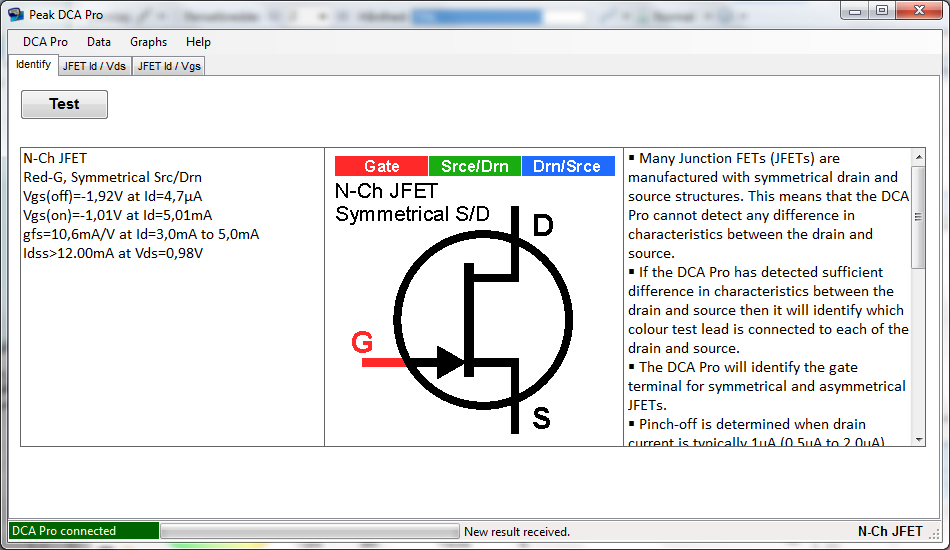
With the computer connection all values can be seen at once and with some more explanation.
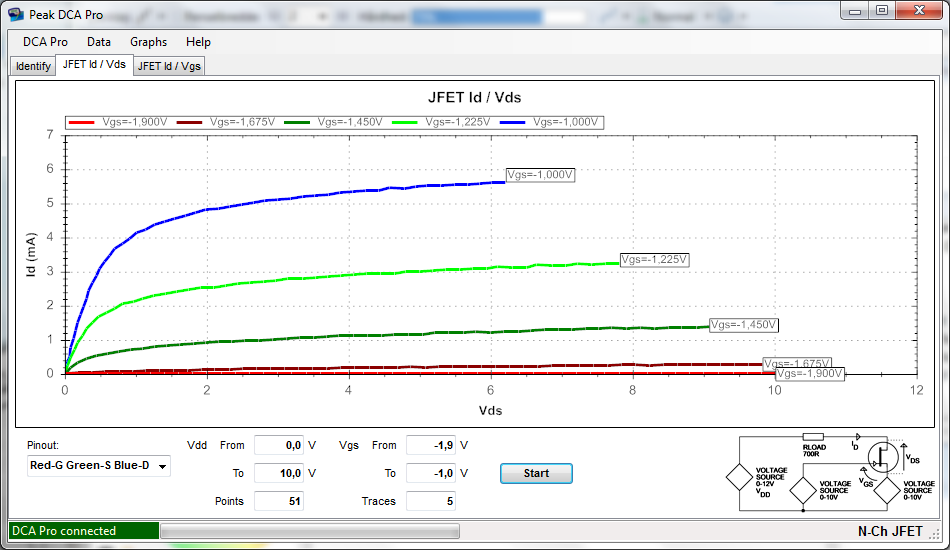
And charts can be made of the transistor.
IGBT (Insulated gate bipolar transistor)

The IGBT is detected as a normal mos transistors.
Voltage regulators

With 10 volt test voltage it is possible to handle many voltage regulators.


Again it is necessary to use SCROLL to see the parameters.
Technical details
Components are tested with 10 volt signals.
When on the current consumption is 16mA to 220mA.
When off the current consumption is 30uA, this means a battery will last 3 to 4 years.
Conclusion
This tester is very good a testing semiconductors, it will identify nearly everything. Parameters are measured at well-defined conditions and by using a computer it is also possible to measure them at other conditions. This function is limited to fairly small currents, it is not possible to test power or switching devices at realistic currents.
To see the measured parameters the SCROLL button must usual be used a couple of times, I would have preferred that the display showed more data and less use of the button was required.
I did not like the sound, but it is easy enough to turn off.
This is my favorite tester for semiconductors, because it is very good at identify components correctly.
Notes
To really test semiconductor parameters you need something like two Keithley 2450 units, that is about 50 times the price of this tester.
About the testing of testers

































